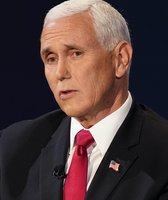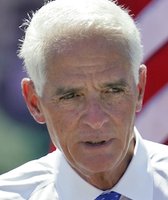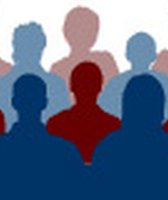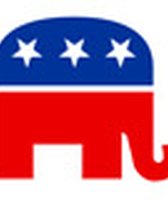Stand up for the facts!
Our only agenda is to publish the truth so you can be an informed participant in democracy.
We need your help.
I would like to contribute
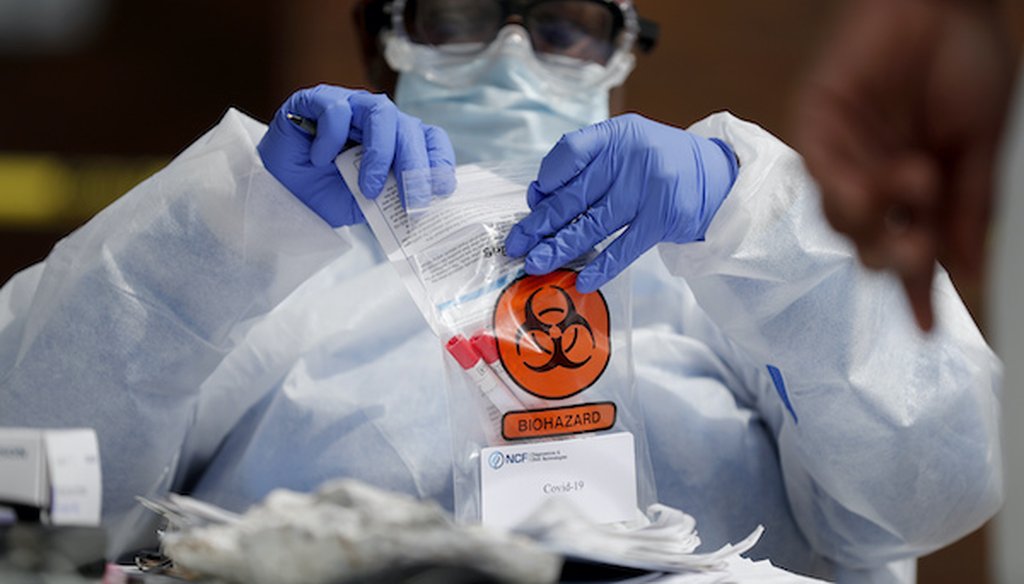
A registered medical assistant handles a nasal swab specimen after it was collected at a drive-thru COVID-19 testing site on April 16, 2020, in St. Louis. (Associated Press)
"The Week in Fact-checking" compiles short summaries of our best work; the links will take you to our full reports. Want this report early and via email? Sign up here.
This week: The keys to coronavirus testing … Stimulus checks and taxes … How ‘progressive’ is Joe Biden? … More on the national lockdown messages … 'Stay home' wins public polling
Swabs and reagents: The keys to more coronavirus testing
President Donald Trump and the nation’s governors have been going back and forth on how to get more testing for COVID-19.
"We could maybe do two or even three times more testing than we are right now," said Michigan Gov. Gretchen Whitmer. "But the fact of the matter is we need those swabs, and we need reagents, so that we can process those tests."
Medical experts say that more testing is needed before states can safely lift restrictions on people and businesses. So what, exactly, are these materials that laboratories are clamoring for? Let’s take a look.
Sign up for PolitiFact texts
Swabs: The swabs that have been required for diagnostic coronavirus tests are not your typical Q-tips.
These swabs have to be long, narrow and flexible enough to reach through the nostril to the nasopharynx, the upper part of the throat that connects with the nasal cavity. The Centers for Disease Control and Prevention says the nasopharyngeal swabs need to be made of synthetic fiber, and cannot be swabs with wooden shafts, as those may inactivate some viruses and inhibit testing.
The Food and Drug Administration recently greenlit the use of a broader range of swabs, including ones made of polyester, which are expected to be easier to manufacture, and it relaxed other guidelines on storing samples.
Reagents: "Reagent" is a generic term that refers to the key chemical ingredients used in various tests and experiments.
For coronavirus testing, it’s expensive for individual laboratories to make and process enough reagents to meet the testing needs in a pandemic.
Dr. Davey Smith, chief of infectious diseases and global public health at University of California-San Diego, said U.S. labs could make small amounts of reagents on their own, but it’s cheaper to get large supplies from overseas.
Smith and other experts say the recent reagent shortages were brought on by the sudden demand for coronavirus diagnostic tests. Labs all over the world are trying to make the same thing, and there aren't enough ingredients to efficiently go around.
"We didn't see a need for a surge for those reagents. But we’ve had multiple pandemics, and we should have seen it coming. That’s the most frustrating part," Smith said.
— Samantha Putterman
Fact-checks of the week
Stimulus checks and taxes: A YouTube video wrongly claimed people will have to pay back their stimulus checks. It said the $1,200 coronavirus relief checks this year are "just an advance on your next tax return. … Next year, you're automatically going to owe $1,200 come tax season." We rated that False. Even if someone receives a bigger stimulus payment in 2020 than their next tax return says they should have received, they will not owe back the difference, much less the entire amount.
Barack Obama on Joe Biden’s progressive chops: Obama endorsed Biden recently and said of his former veep, Biden "already has what is the most progressive platform of any major party nominee in history." We rated that Half True. If you compare Biden’s platform to an absolute concept of liberalism, there’s a good case that it’s the most progressive. Biden has moved to the left compared with where Obama and some previous Democratic nominees stood. But Biden is hardly in his party’s ideological vanguard, at least compared with previous nominees such as George McGovern.
Today vs. the 1918 flu: Michigan Gov. Gretchen Whitmer said, "During the flu pandemic of 1918, some cities lifted social distancing measures too fast, too soon, and created a second wave of pandemic." We rated that Mostly True. Typically, when social distancing ends, there is a second wave. The goal is to make the second wave as small as possible. Whitmer pointed to research from the University of Michigan in 2007 that found after social distancing rules ended in many cities, cases and deaths surged.
Knowing the facts has never been more important: Please consider donating to PolitiFact today.
What we’re reading
Back in March, PolitiFact readers inundated us with requests to fact-check a claim that the federal government was gearing up for an imminent national lockdown. We rated the claim False.
"Homeland security is preparing to mobilize the national guard. Preparing to dispatch them across the US with military," read the message. "They will also call in 1st responders. They are preparing to announce a nationwide 2 week quarantine for all citizens, All businesses closed."
This week, we got more news on the origin of the message.
The New York Times reported that those messages may have been pushed by foreign operatives on behalf of the government of China. Whether the operatives created the messages or simply aggressively amplified them is unclear.
The New York Times attributed its reporting to six American officials who spoke on the condition of anonymity to publicly discuss intelligence matters. They had heightened concerns because some of the false messages showed up on people’s cell phones as text messages.
Here at PolitiFact, we’ve found it’s very tough to track down the people responsible for creating misinformation. Connecting it to international governments is even more difficult. A major news organization like the New York Times can make those connections sometimes, and, in this case, weeks after the misinformation spread.
Protesters get news coverage, but most people want to stay home
In recent days, a number of state capitals have faced protests against continued stay-at-home orders and business closures. These have put a spotlight on the dilemmas faced by the nation’s governors over whether, and how, to open their economies again.
So how do Americans actually feel?
Americans, many of whom have been stuck at home for several weeks, may dream of returning to the pre-coronavirus "normal," but only in a theoretical, aspirational sense. Polling has consistently shown that Americans do not want to become fully open right now, because they perceive a serious health risk from doing so.
We looked at six national polls from recent weeks.
A typical one was a Fox News poll that asked, "Do you favor or oppose the federal government taking the following action in response to coronavirus: Announcing a national stay-in-place order for everyone except essential workers?"
Among all respondents, 80% supported the idea. Support broke down to 86% of Democrats, 76% of Republicans, and 74% of independents.
Read our story for more polling on stay-at-home orders.
— Louis Jacobson
Pants on Fire
Do you smell smoke?
Here's your Pants on Fire fact-check of the week:
See what else we've rated Pants on Fire this week.
Our Sources
See linked fact-checks
























